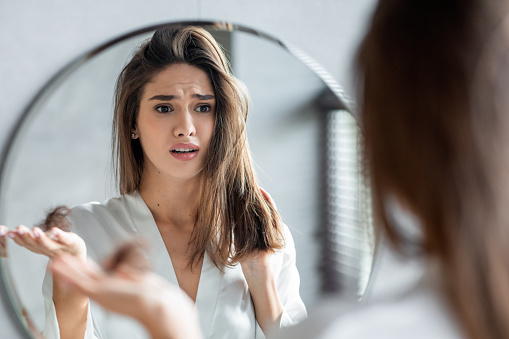
The 3 best hair loss solutions, get to know them, losing a few strands of hair (about 100) every day is normal, but massive hair loss can be a devastating problem. Did you know that about a third of women suffer from hair loss at some point in their lives?
To help those who deal with hair loss and are unable to know the appropriate treatment for them, we monitor the treatments used to reduce hair loss, so that you know what is best for you.
Read more about: Top 4 benefits of Vitamin E for hair
The 3 best hair loss solutions, get to know them
Table of Contents
While there are many hair loss treatments, each one of these treatments is chosen according to your condition, after the doctor orders some tests and knowledge of your hair care routine and medical and family history. Here’s a breakdown of the three most popular treatments and which ones are the best.
-
Platelet Rich Plasma (PRP) Therapy
Platelet Rich Plasma (PRP) therapy is a three-step medical treatment in which the blood of a patient with hair loss is injected into the affected areas to re-grow it and stimulate new hair follicles.
PRP improves hair growth and thickness in patients with androgenetic alopecia, and sometimes this treatment is combined with other hair loss treatments to give the best results.
-
Laser hair growth treatment
Low-level laser therapy is known as red or cold light laser therapy, which exposes scalp tissues to photons, and these photons are absorbed by weak cells to promote hair growth.
This treatment is good for people who suffer from androgenic alopecia, which is common in both males and females. People with androgenic alopecia will experience hair loss on the top of their heads or around their hair shafts, so this treatment should be used under constant medical supervision.
-
Hair transplantation
A hair transplant is performed to help regrow hair in areas of balding or thinning of the scalp. It involves taking hair from other parts of your body and grafting it onto the balding areas on your scalp. Dermatologists say hair transplants help restore a youthful appearance to those who suffer Hair loss, especially androgenetic alopecia.
Read more about: A HAIR TRANSPLANT CAN GIVE YOU PERMANENT, NATURAL-LOOKING RESULTS
The habit of wet hair before going to sleep should be avoided
If you prefer to take a warm bath before bed, you are unintentionally causing disaster for your hair. It is possible that you do not wait for your hair to dry, so you fall asleep with wet hair, and this causes a lot of damage to your hair.
Hair breakage:
When you sleep with wet hair, hair is more likely to break, because strands are at their weakest when hair is wet, and friction between hair and pillow when sleeping can exploit this weakness and cause breakage.
Infection:
A humid environment breeds bacteria and fungus just like anything else, and unfortunately, this also applies to your wet hair. Sleeping with wet hair can promote bacteria and fungus on your scalp and the resulting infection can be somewhat painful to deal with.
Dandruff:
Dandruff is a type of infection and by sleeping with wet hair, you are more likely to catch it.
Dull, lifeless hair:
Sleeping with wet hair is a sure way to damage your hair, this is because pillowcase fabric can absorb your hair’s natural moisture and oil.
Getting sick:
A wet head can lead to colds and coughs, especially if you sleep with the air conditioning on.